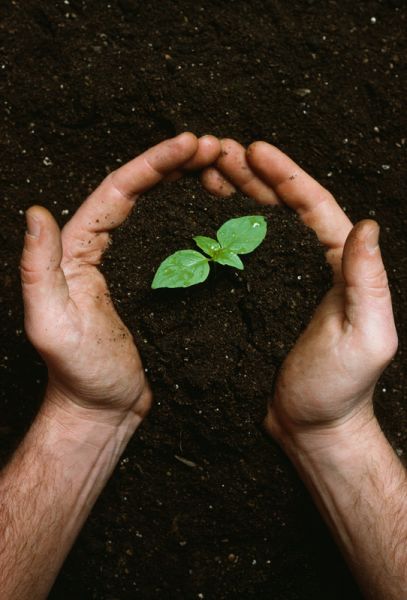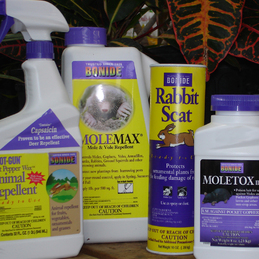by Ken Lain, the mountain gardener
In my youth, as a novice gardener I blundered through many a growing season only to learn what not to do. Luckily, I found a few gardening neighbors and some kind family members who came along with good advice that jump-started my gardening skills. Much of the reason for this weekly column is to help local gardeners reduce their blunders without encountering the frustrations of my early mistakes.
Much of our gardening skills are learned by mistakes, but why not learn from someone else’s fumbles? It certainly costs less that way, right? Here are my top 7 mistakes from over the last couple of decades.
Mistake #1 Accepting free plants – We’ve all done it. When you’re first starting your  garden, the offer of free plants is too tempting to resist. But it doesn’t take long to learn that free plants come with even more work than free puppies.
garden, the offer of free plants is too tempting to resist. But it doesn’t take long to learn that free plants come with even more work than free puppies.
The main reason someone would have plants to give away is because the plants grew too aggressively. However, when you have a lot of empty garden space to cover, that can seem like a real benefit.
That is, they don’t look so imposing when first put into that rather bare bed. But, as the old garden saying goes, “First year they sleep, second year they creep, third year they leap.” It doesn’t take long before you have free plants to give away! And that seems like an even more egregious mistake than accepting them in the first place.
So, beware; if you don’t have the time or patience to keep free plants in check, you may rue ever having accepted them.
Mistake #2 Composting weeds when in flower – Weeds are masters of survival and bolt to seed with astonishing speed. Ideally we should pull weeds long before they get to the flowering stage, but let’s be real: we often don’t do what we know we should do when we know we should do it! That’s when the easiest thing to do is to toss them into the weed bucket and dump the whole thing into the compost pile.
However, just because they’ve been yanked from the soil, weeds don’t curl up and die. They will use every last ounce of strength to make sure their seeds are dispersed. They may even take root in our compost piles and come back even stronger.
If you think one or two flowering weeds isn’t going to cause a problem, keep in mind that a single garlic mustard plant, my nemesis at the moment, can produce over 600 seeds. A particularly vigorous weed can produce over 7000 seeds. That is a lot of future pulling and why I opt for the garbage for all of my weeds and infected plants.
Mistake #3 Reaching for the spray – We can all be a little too quick to reach for instant resolution from a spray bottle. But often we don’t take time to read the  instructions. There’s a lot of useful information on those labels. Unfortunately, there’s a lot of fine print on the labels, which makes the idea of reading the info positively unappealing.
instructions. There’s a lot of useful information on those labels. Unfortunately, there’s a lot of fine print on the labels, which makes the idea of reading the info positively unappealing.
Without question there are 2 things you should try to ferret out, before you spray:
1) Will it work on the problem? ~ Don’t laugh. Many people spray a fungicide on an insect or an insecticide on a diseased plant. When your red tipped photinia has powdery mildew, no amount of bug spray is going to cure it! This requires that you know what the actual problem is. Do a little observation and investigation. Better yet, talk to one of the garden professionals here at Watters Garden Center.
2) Will it harm the plant? ~ Many manufacturers of pesticides add substances to help the product cover more easily, or to help the spray cover more surface areas. Some of these are phototoxic to plants. They reflect the sun’s rays and burn leaves. To warn gardeners, labels advise to spray only on overcast days or in the evening. I spray my garden only during early morning and/or evening. Not only is there apt to be less wind, but also that’s when bees and other pollinators are less active.
Besides, you can’t always wait for an overcast day in Arizona!
Mistake #4 Ignoring a plant’s likes & dislikes – I was determined to grow cardinal flowers even though they like moist soil and my garden soil was always thirsty. My cardinal flowers didn’t get the conditions they crave and they reacted by dying. It was painful to watch.
Whether it’s moisture levels, sun exposure, too much nearby competition, or poor soil quality, plants won’t thrive if asked to grow where they aren’t happy.
One or two must-have plants with special needs are okay. Just be sure to put them where you’ll remember to dote on their special requirements. But if you fill your garden with the wrong plants in the wrong place, you’re just asking for trouble. Click on this list of my Top 10 Plants for the High Country.
Note: This problem doesn’t happen only when we plant something in less than ideal conditions. Pay special attention when a nearby tree starts to shade a previously full sun garden, or when you take down a tree and your shade lovers are suddenly blistering in the heat.
Mistake #5 Being a sucker for plants in flower – We put the best impulse buys  either at the entrance when you walk into the garden center, or right next to the check out lines. Their beauty instantly hooks gardeners! Most of these plants are already at their peaks and by the time you get them home, their beauty begins to fade. Of course, if it’s a plant you really want and you’re willing to wait until next year to see it bloom gain, by all means take it home.
either at the entrance when you walk into the garden center, or right next to the check out lines. Their beauty instantly hooks gardeners! Most of these plants are already at their peaks and by the time you get them home, their beauty begins to fade. Of course, if it’s a plant you really want and you’re willing to wait until next year to see it bloom gain, by all means take it home.
Look at the whole plant. You will have a much easier time creating a garden that looks good all season if you look past the flowers and consider the shape and size of the plant, the boldness of the leaves, even the color of the foliage.
Additionally, some plants at the garden center have not had time to grow enough to look appealing. Some are late bloomers and may take a few years to fill out, but will be fabulous when they do. Go easy on the impulse buys and spend more time reading the labels. Your garden looks its best with a good mix of plants for every season.
Mistake #6 Planting before you clear the weeds – This is a huge no-no, yet impatient gardeners do it all the time. You plant with the intent of doing a thorough clean up later. In the meantime, the weeds get worse, they flower, and go to seed. You play catch-up on that “clean up later” for the rest of the summer.
If you are really tight on time or ambition, to smother weeds consider putting down 4-6 sheets of newspaper covered with shredded cedar bark. Placed over the weedy spots, this trick can make fast work of weeds and straying grass. Wet the paper, so it doesn’t fly away, and cover it with a layer of cedar mulch. Your garden will look so much better.
Mistake #7 – Mulch Volcanoes – I can’t believe I still see this. Mulch mounded high around the base of a tree trunk. Seriously, is the point to smother weeds, make mowing easier, or improve aesthetics? Piling mulch and extra soil around a tree’s trunk is very bad for the plant, and can kill it. Heaping mulch and soil up against the bark of the tree traps moisture, which can cause the trunk to rot. To do its job properly, bark must have exposure to air.
Burying new plants in a deep hole or divot also is wrong. The myth is that the hole will collect rainwater and help the plant get established. Not so. Plants should be at garden level, or just above for best soil drainage. August rains and March snows collect so much moisture that new plants can drown if planted below normal soil levels. Click on this guide to proper planting that works.
A gardening friend, more experienced than I, once told me, “if you weren’t killing a few plants along the way, you were missing out on some great garden lessons.” Well, I’ve sure had my share of lessons. I still like to try new plants, just to see how they do. I’ve learned to depend on a handful of plants as my proven performers, plants that aleviate some of the pressure to succeed and let me sit back and enjoy. I hope you find that stable of proven performers for your garden, too.
Until next week, I’ll see you at Watters Garden Center.
Ken Lain can be found throughout the week at Watters Garden Center, 1815 W. Iron Springs Rd in Prescott, or contacted through his web site at WattersGardenCenter.com or FB.com/WattersGardenCenter.

